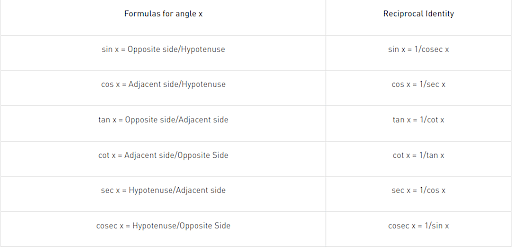If \(m\) and \(n\) respectively are the numbers of positive and negative values of \(\theta\) in the interval \([-\pi, \pi]\) that satisfy the equation \(\cos 2 \theta \cos \frac{\theta}{2}=\cos 3 \theta \cos \frac{99}{2}\), then \(m n\) is equal to__
Correct Answer: 25
Approach Solution - 1
The given equation is:
\( \cos 2\theta \cdot \cos \frac{\theta}{2} = \cos 30 \cdot \cos \frac{90}{2}. \)
Simplify using trigonometric identities:
\( 2 \cos 2\theta \cdot \cos \frac{\theta}{2} = \cos \frac{50}{2} + \cos \frac{150}{2}. \)
Solve for \(\theta\), leading to:
\( \theta = \frac{2\pi}{5}, \quad \theta = \frac{k}{5}. \)
There are \(m = 5\) positive and \(n = 5\) negative values:
\( mn = 5 \cdot 5 = 25. \)
Final Answer:
\( \boxed{25}. \)
Approach Solution -2
Top Questions on Trigonometric Equations
If $ \theta \in [-2\pi,\ 2\pi] $, then the number of solutions of $$ 2\sqrt{2} \cos^2\theta + (2 - \sqrt{6}) \cos\theta - \sqrt{3} = 0 $$ is:
- JEE Main - 2025
- Mathematics
- Trigonometric Equations
- If \[ \lim_{x \to 0} \frac{\cos(2x) + a \cos(4x) - b}{x^4} \] is finite, then \( a + b = \) __.
- JEE Main - 2025
- Mathematics
- Trigonometric Equations
- Let $ A = \left\{ \theta \in [0, 2\pi] : \Re\left( \frac{2 \cos \theta + i \sin \theta}{\cos \theta - 3i \sin \theta} \right) = 0 \right\} $. Then $ \sum_{\theta \in A} \theta^2 $ is equal to:
- JEE Main - 2025
- Mathematics
- Trigonometric Equations
- If for $ \theta \in \left[ -\frac{\pi}{3}, 0 \right] $, the points $ (x, y) = \left( 3 \tan\left( \theta + \frac{\pi}{3} \right), 2 \tan\left( \theta + \frac{\pi}{6} \right) \right) $ lie on $ xy + \alpha x + \beta y + \gamma = 0 $, then $ \alpha^2 + \beta^2 + \gamma^2 $ is equal to:
- JEE Main - 2025
- Mathematics
- Trigonometric Equations
- The sum of all values of \( \theta \in [0, 2\pi] \) satisfying \( 2\sin^2\theta = \cos 2\theta \) and \( 2\cos^2\theta = 3\sin\theta \) is:
- JEE Main - 2025
- Mathematics
- Trigonometric Equations
Questions Asked in JEE Main exam
- The electric field of an electromagnetic wave in free space is \[ \vec{E} = 57 \cos \left[7.5 \times 10^6 t - 5 \times 10^{-3} (3x + 4y)\right] \left( 4\hat{i} - 3\hat{j} \right) \, \text{N/C}. \] The associated magnetic field in Tesla is:
- JEE Main - 2025
- Electromagnetic Induction and Inductance
- Find the output voltage in the given circuit.

- JEE Main - 2025
- Current electricity
Given below are two statements. One is labelled as Assertion (A) and the other is labelled as Reason (R):
Assertion (A): In an insulated container, a gas is adiabatically shrunk to half of its initial volume. The temperature of the gas decreases.
Reason (R): Free expansion of an ideal gas is an irreversible and an adiabatic process.In the light of the above statements, choose the correct answer from the options given below:
- JEE Main - 2025
- Current electricity
- Find the equivalent resistance between two ends of the following circuit:

- JEE Main - 2025
- Current electricity
- A wire of length $ 25 \, \text{m} $ and cross-sectional area $ 5 \, \text{mm}^2 $ having resistivity $ 2 \times 10^{-6} \, \Omega \cdot \text{m} $ is bent into a complete circle. The resistance between diametrically opposite points will be:
- JEE Main - 2025
- Current electricity
Concepts Used:
Trigonometric Functions
The relationship between the sides and angles of a right-angle triangle is described by trigonometry functions, sometimes known as circular functions. These trigonometric functions derive the relationship between the angles and sides of a triangle. In trigonometry, there are three primary functions of sine (sin), cosine (cos), tangent (tan). The other three main functions can be derived from the primary functions as cotangent (cot), secant (sec), and cosecant (cosec).
Six Basic Trigonometric Functions:
- Sine Function: The ratio between the length of the opposite side of the triangle to the length of the hypotenuse of the triangle.
sin x = a/h
- Cosine Function: The ratio between the length of the adjacent side of the triangle to the length of the hypotenuse of the triangle.
cos x = b/h
- Tangent Function: The ratio between the length of the opposite side of the triangle to the adjacent side length.
tan x = a/b
Tan x can also be represented as sin x/cos x
- Secant Function: The reciprocal of the cosine function.
sec x = 1/cosx = h/b
- Cosecant Function: The reciprocal of the sine function.
cosec x = 1/sinx = h/a
- Cotangent Function: The reciprocal of the tangent function.
cot x = 1/tan x = b/a
Formulas of Trigonometric Functions:
